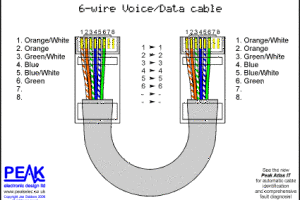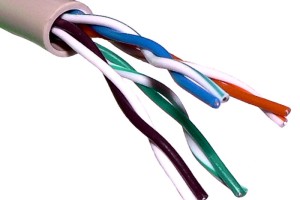What is Cable Grounding and what are the benefits?
The Grounding or Earthing point of a cable or wire is usually the place at which the cable is connected to the earth and/or where the circuit completes itself and is measured. The concept of grounding came about along with the invention of circuitry, which in simplistic terms is the idea of electrical (or otherwise) currents running in a return loop, and requiring an eventual end to that cyclical journey. It was discovered that the ground was a good source to end, contain and measure those loops of power. Many types of cables are actually required, either by design or attention to safety, to be thoroughly grounded. The ground (or earth) is a relatively stable and dependable conductor of power, and a constant to measure the fluctuations of that power against. The main goal of cable grounding is to protect the signal from degradation and interference as well as protecting and materials or persons who come may come into contact with them.
Grounding a coaxial cable, (the kind you use for your TV or internet) can be achieved with a few basic tools and processes. If you are not a do-it-yourself kind of person, a reliable technician can be sought through your service provider. In most situations, the installation of your cabling system will have included an effective grounding process, but in some cases, understanding how grounding works enough to repair or install it on your own can be a good idea, especially in emergency situations.
You will need to acquire a grounding block appropriate to the sort of cable you are grounding. Most home improvement and hardware stores carry the varieties needed for such a task. There is also a basic connector that will ground the cable and its signal to the block. All of this takes place outside, at the place where the cable enters the building. The grounding wire (the connector) should get connected to the grounding block and then sent to the earth. Running the wire to the ground removes the static out of the actual block and ensures that the power current an effective outlet to run into. Grounding wires for television lines come in three basic sorts: aluminum, copper and copper-clad, all with varying thicknesses and sizes. It is important that you apply the correct kind of grounding wire for your system and circumstance. For many of these connections, a bit of silicone grease needs to be applied to the end of the wire before you screw it into the block.
The grounding wire’s job is to carry excess static and unwanted interference away from your system, sending it neutrally into the ground. Once the grounding wire and block are attached they can be mounted into a wall close to an entrance point of the building. Make sure that you ground your cable far away from where other cables are grounded. This can cause ground loops, where more than one current make contact with each other in the earth and send unwanted signal interference back into your system. Even if just to better comprehend the cabling system you have in your home or business, it is wise to check out the grounding system that may already be installed, and to understand how cable grounding serves to protect your information systems when installed or maintained in the future.




